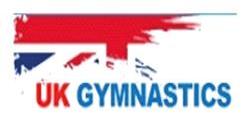Confusion is a complex concept
The courts are bound to take in the bigger picture, writes Beverley Potts. [2021] EWCA Civ 425, UK Gymnastics Ltd, UK Gymnastics Affiliation Ltd & Christopher Adams v British Amateur Gymnastics Association, Court of Appeal, 24th March 2021.

This was an appeal against a successful trade mark infringement and passing off claim before Her Honour Judge Melissa Clarke in the Intellectual Property Enterprise Court, British Amateur Gymnastics Association v UK Gymnastics & Others.1 The Claimant, the British Amateur Gymnastics Association (BAGA), is recognised by Sport England as a National Governing Body (NGB) for gymnastics in the UK. It is the proprietor of two UK registered trade marks, each of which is a series of two marks.
The main Defendant, UK Gymnastics Ltd (UKG), had advertised, offered and provided membership services to gymnasts, gymnastics clubs and coaches; competitions; courses and/or badge/certificate programmes; and educational services under and by reference to the words “UK Gymnastics” and two logos incorporating those words. The judge held that UKG had infringed BAGA’s trade marks under s10(2) and s10(3) Trade Marks Act 1994 and had also committed passing off. UKG appealed that decision to the Court of Appeal (CoA) on a number of grounds.
Appeal decision
The CoA overturned BAGA’s third claim of passing off and discharged the relevant parts of the injunction, with Lord Justice Arnold giving the leading judgment. Otherwise, the appeal was dismissed.
On the issue of trade mark infringement and on comparison of signs, the judge had previously found that:
- There was identity or a high degree of similarity between the services offered by UKG and the services identified in classes 28 and 41 of the trade mark filings.
- The “real difference” between UKG’s word sign and the trade marks was the use of the word “UK” rather than the word “British”. These words were visually and aurally different but, because of their strong conceptual similarity, there was, on a global appreciation, a medium degree of similarity of the word sign to the trade marks; and
- The logo signs had a low degree of similarity, although the similarity was slightly greater in the colour version in the series of each trade mark. The Union Jack elements did not materially increase the conceptual similarity with the trade marks, which was already very strong.
In making these assessments, the judge had emphasised the principles set out in Specsavers International Healthcare Ltd v Asda Stores Ltd2, namely that:
- A lesser degree of similarity of marks could be offset by a greater degree of similarity between the goods or services;
- There is a greater likelihood of confusion where the earlier mark has a highly distinctive character, which was accepted to be the case with BAGA’s trade marks; and
- The average consumer rarely makes direct comparisons and must rely upon imperfect recollection of the marks.
On balance, the judge had been satisfied that there was a likelihood of confusion for those paying a lower degree of attention, such as child gymnasts or their parents, who may see the signs while attending sporting events and mistakenly believe UKG was the only NGB for gymnastics in the UK.

The Defendants, however, alleged that this finding was inconsistent because it should have concluded that both the word and logo had a low degree of similarity. While the degree of visual and aural similarity was low, a strong degree of conceptual similarity was found in relation to both types of mark. However, the CoA did not consider the different findings for the two types of mark to be problematic and did not think that the judge had made an error of principle in arriving at her conclusion following a multifactorial evaluative assessment. The logos included visual elements not present in the word sign (ie, block capitals, more prominent words and the flag elements), which allowed a differential assessment of the level of similarity. In any event, it made no difference to the overall conclusion because the judge was entitled to find that there was a likelihood of confusion even where the similarity of the signs was low.
No error on confusion
UKG also argued that the judge had been wrong to find a likelihood of confusion. There was only one incidence of confusion, which involved an employee, and UKG had not been made aware of any instances of actual confusion. UKG considered this to be significant given that the two organisations had been running in parallel since 2012/2013, and the absence of evidence of confusion becomes more significant the

longer the period of trade (relying upon Stichting BDO v BDO Unibank Inc.3). However, the CoA did not think that the judge had made any error in accepting that the small scale of UKG’s operations (compared with that of BAGA) meant that it was very possible that any confusion could have been “masked” or not brought to BAGA’s attention. It is always relevant to consider what opportunity there has been for confusion to occur and what opportunity there has been for any such confusion to be detected (as per Samuel Smith Old Brewery v Philip Lee4).
NGB status
UKG appealed the judge’s finding that UKG was not an NGB for the sport of gymnastics in the UK. Recognising the difficulty that this was a finding of fact, the challenge was based on weak arguments regarding definitions that were swiftly dismissed by the CoA. The judge’s finding was clearly open to her on the evidence and was not surprising given that the sole director of UKG admitted in cross-examination that “we are not a National Governing Body”.

UKG also objected to the judge’s ruling that it had engaged in passing off because there was a misstatement on its website claiming that it was an NGB when this wasn’t the case. The CoA agreed that this allegation hadn’t been pleaded. Instead, the Particulars of Claim alleged that UKG had misrepresented that BAGA had conferred NGB status on it. The judge had not considered whether UKG had made that
misrepresentation, so she had found UKG liable for passing off on the wrong basis. It was not open to her to find passing off on the ground of a misrepresentation that hadn’t been put to her.
Nevertheless, this did not detract from the ruling that UKG had committed passing off by misrepresenting that UKG’s services were those of BAGA, the subject of some commercial arrangement with BAGA, or that UKG was connected with BAGA in some way.
Injunction issue
The passing off injunction as granted by the judge included wording that UKG was to be prevented from “denoting some form of official or approved status” or “asserting to be a National Governing Body contrary to fact”. For the reasons set out above, these parts of the injunction extended beyond the pleaded case. In addition, the wording was considered by the CoA to be ungrammatical and unclear as to what UKG could and couldn’t do. Finally, as there was no definition of an NGB, the scope of the last part was uncertain. Accordingly, those parts of the injunction were set aside, and the scope of the injunction was narrowed.
Confirmation
Ultimately, the CoA has confirmed that trade mark owners can succeed in an infringement and passing off action despite there being no evidence of actual confusion. Even where the marks have a low level of aural and visual similarity, there can still be a likelihood of confusion, and factors such as conceptual similarity, the distinctive character of the earlier mark, similarity of services and the level of attention of the relevant consumers can play a part in the overall assessment. This case is also a reminder that the wording of injunctions needs to be clear and precise and correspond to the case as pleaded.
1 [2020] EWHC 1678 (IPEC)
2 [2012] EWCA Civ 24
3 [2013] EWHC 418 (Ch)
4 [2011] EWHC 1979 (Ch)
Key points
- The assessment of likelihood of confusion is multifactorial, and conceptual similarity can play a key role, even when the marks don’t look or sound alike
- There can be trade mark infringement and passing off without evidence of actual confusion. An absence of actual confusion can become more significant the longer the parties have traded in parallel, but it is also important to consider what opportunities there have been for confusion to occur and be detected
- Particular care needs to be taken to the specific allegations set out in the statements of case. Judges and parties cannot stray from these and amendments should be made where necessary
- You need an error of principle to overturn a finding of likelihood of confusion
Beverley Potts is a Senior PSL at Allen & Overy
Read the magazine





